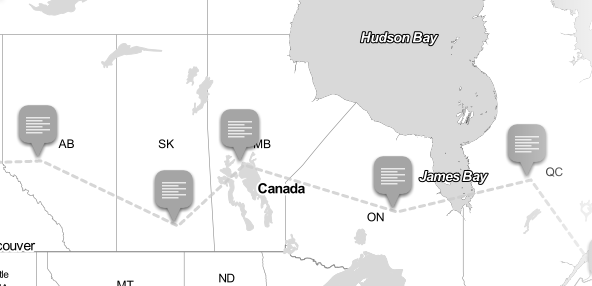How much do newspaper reporters earn in 2016?
The average employment income of a journalist in Canada was $46,621, according to Statistics Canada’s 2011 census.
By Errol Salamon, Work and Labour Editor
How much do reporters earn? That’s a question that has long interested journalists, industry experts, j-school instructors, j-school students and J-Source alike.
This year, we decided to update and expand on a survey that J-Source published in 2012 on journalists’ pay rates.
The average employment income of a journalist in Canada was $46,621, according to Statistics Canada’s 2011 census, the most up-to-date data available. This number is slightly above the average employment income of all occupations—$43,565.
Based on recent data from Newspapers Canada, the country has 77 paid English-language daily newspapers in 2016. Of these 77 dailies, we surveyed the most recent collective agreements available of all 51 unionized English-language dailies to determine not only pay rates but also the unions to which reporters belong and their typical workweek. Here’s what we found.
Unions
Almost all organized reporters are members of either Unifor or CWA Canada. Exceptions include the Cornwall Standard-Freeholder, whose reporters are members of Teamsters/Graphic Communications Conference Local 51M, and the Corner Brook Western Star, whose reporters belong to the United Food and Commercial Workers Canada Local 1252.
Workweek
The standard workweek for most reporters is 37.5 hours.
According to a few collective agreements, though, a typical workweek is 35 or 36 hours. Exceptions include the Prince George Citizen, Regina Leader-Post, Northumberland Today, Globe and Mail, Toronto Star, Toronto Sun, Montreal Gazette and Halifax Chronicle Herald.
However, these numbers don’t include actual hours worked or overtime hours.
Pay Rates
Pay rates can vary across and within the nine provinces where dailies are unionized.
Analysis
On average, the starting pay rate is $695.34 weekly, while the average top salary is $1,127.08 per week.
However, these rates are based on minimum amounts and many collective agreements permit “merit pay” for individual reporters, with slight variations of the following clause:
“Individual merit pay may be acknowledged, at the discretion of the company, by payments above the minimum. Nothing in this agreement shall prevent employees from bargaining individually with the company for salaries in excess of the minimum established herein.”
Reporters, of course, don’t only work at newspapers, so it’s important to conduct another survey in the future that compares these pay rates to rates at broadcasting companies.
2016 Reporter Top Salaries at Newspapers in Canada
The pay rates of reporters at the 51 unionized newspapers listed below represent the minimum starting pay rates and top rates required in collective agreements and the number of years it takes to attain them.
Weekly pay rates at unionized newspapers in 2016
Correction, Sept. 23, 2016: An original version of this story included incorrect weekly pay rates and starting pay rates for the London Free Press. They have since been updated. As a result of the update, we have also adjusted the average starting pay and and average top salary. We apologize for the error.
Errol Salamon is a contributing editor at J-Source. He is a senior lecturer in digital media and communication in the department of media and performance at the University of Huddersfield. He taught in the Hubbard School of Journalism and Mass Communication at the University of Minnesota. Salamon is also co-editor of the book Journalism in Crisis: Bridging Theory and Practice for Democratic Media Strategies in Canada (University of Toronto Press, 2016).

